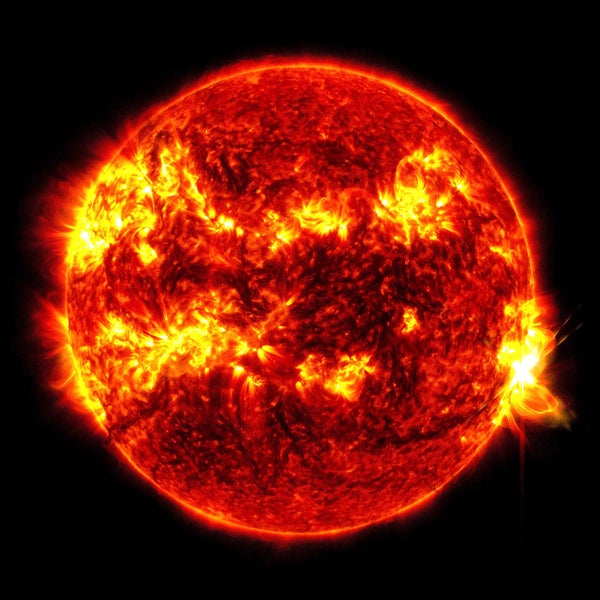- Geomagnetic storms can cause loss of electricity supply
- GPS system, even more threat to spacecraft
- Increased illumination poses no threat to the crew, a threat to the astronauts
After two decades ie 20 years, the most powerful solar storm hit the Earth on Friday. Due to which, from America to Britain, the sky has been seen shining. The US National Oceanic and Atmospheric Administration (NOAA) has classified this magnetic storm as a G5 category. Geomagnetic storms are measured on a scale of G1 to G5, with G5 being considered the most extreme level of storm. NOAA has warned that this geomagnetic storm from the Sun could affect satellites and power grids on Earth. Due to which communication may be disrupted and many areas may be plunged into darkness.
NASA took a picture of the glowing sun
The Solar Dynamics Observatory of the American space agency NASA has captured the image of this explosion in the Sun. NASA said the Sun emitted a bright flare on May 10, 2024, peaking at 2:54 a.m. local time. According to NOAA’s Weather Prediction Center, increased solar flares have resulted in many emissions of plasma and magnetic fields from the corona (coronal mass ejections). This was preceded by a major solar storm in October 2003, which caused blackouts in Sweden and damaged power infrastructure in South Africa. Scientists expect more coronal mass ejections to hit Earth in the coming days.
Earth’s equivalent sun spot in the Sun
Every 11 years the Sun experiences low and high levels of solar activity associated with the amount of sunspots on its surface, the Sun’s strong and constantly changing magnetic field driving these dark regions. Some of these may be Earth-sized or even larger. Geomagnetic storms have led to a sharp increase in the Northern Lights, which have been seen from the US to Britain. During the solar cycle the Sun changes from quiescent to intense and active periods. The peak of activity is called solar maximum. During the peak of this movement in the Sun, the Sun’s magnetic poles reverse. The Sun’s current activity, called Solar Cycle 25, is full of more activity than expected. Scientists have tracked more sunspots this time than in previous cycles.
What will be the effect on Earth?
Intense solar flares create a strong geomagnetic field, which disrupts part of Earth’s upper atmosphere. This can have an immediate impact on communications and GPS. Along with this, the unlimited energy released from the sun can also disrupt the electronics of the spacecraft. Astronauts can be affected for anywhere from 20 minutes to several hours.
There is no threat to the International Space Station
After a thorough analysis of the solar storm, NASA has said it poses no threat to the crew aboard the International Space Station and no additional precautionary measures are needed. NASA said Earth’s magnetic field protects life on the planet from radiation from space. However, the space station orbits about 400 kilometers above the Earth. However, it has some protection due to its proximity to the Earth’s magnetic field. A solar flare takes 8 minutes to reach Earth, which means the most recent flare has passed. This increased illumination poses no danger to the crew.















